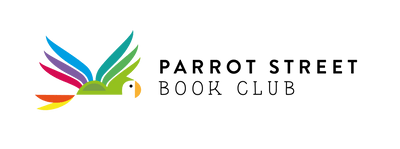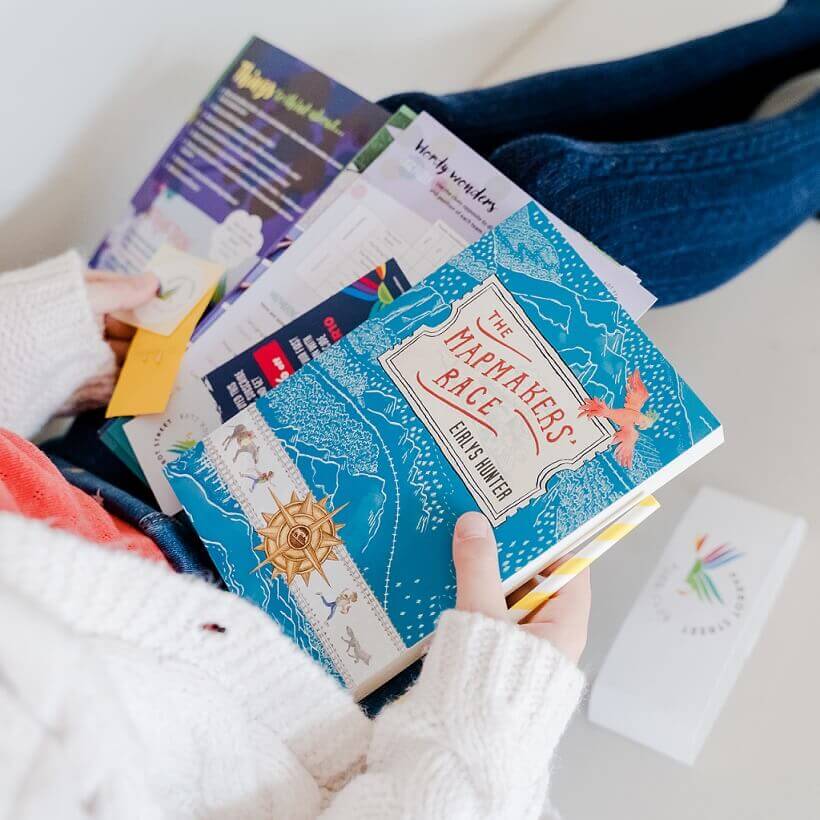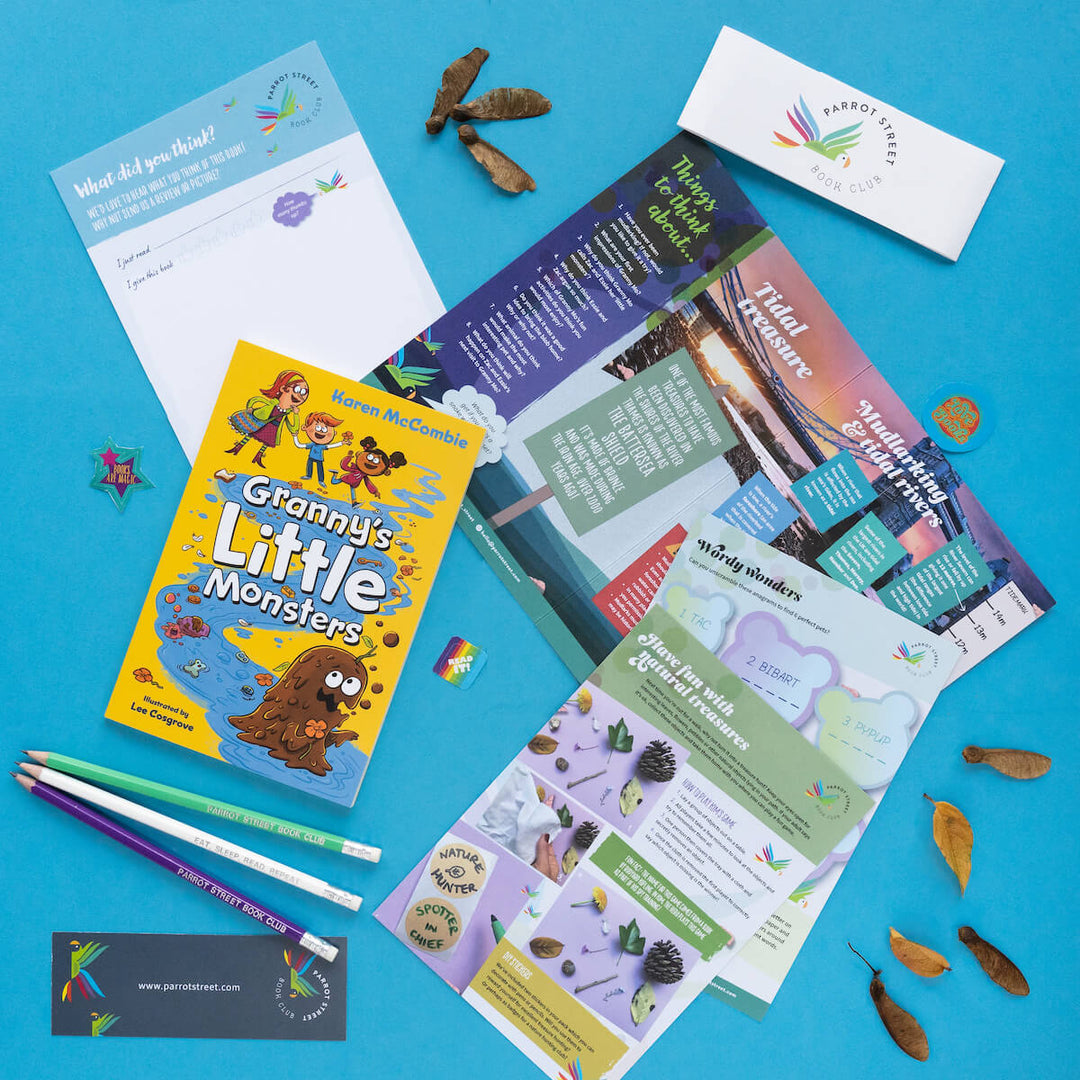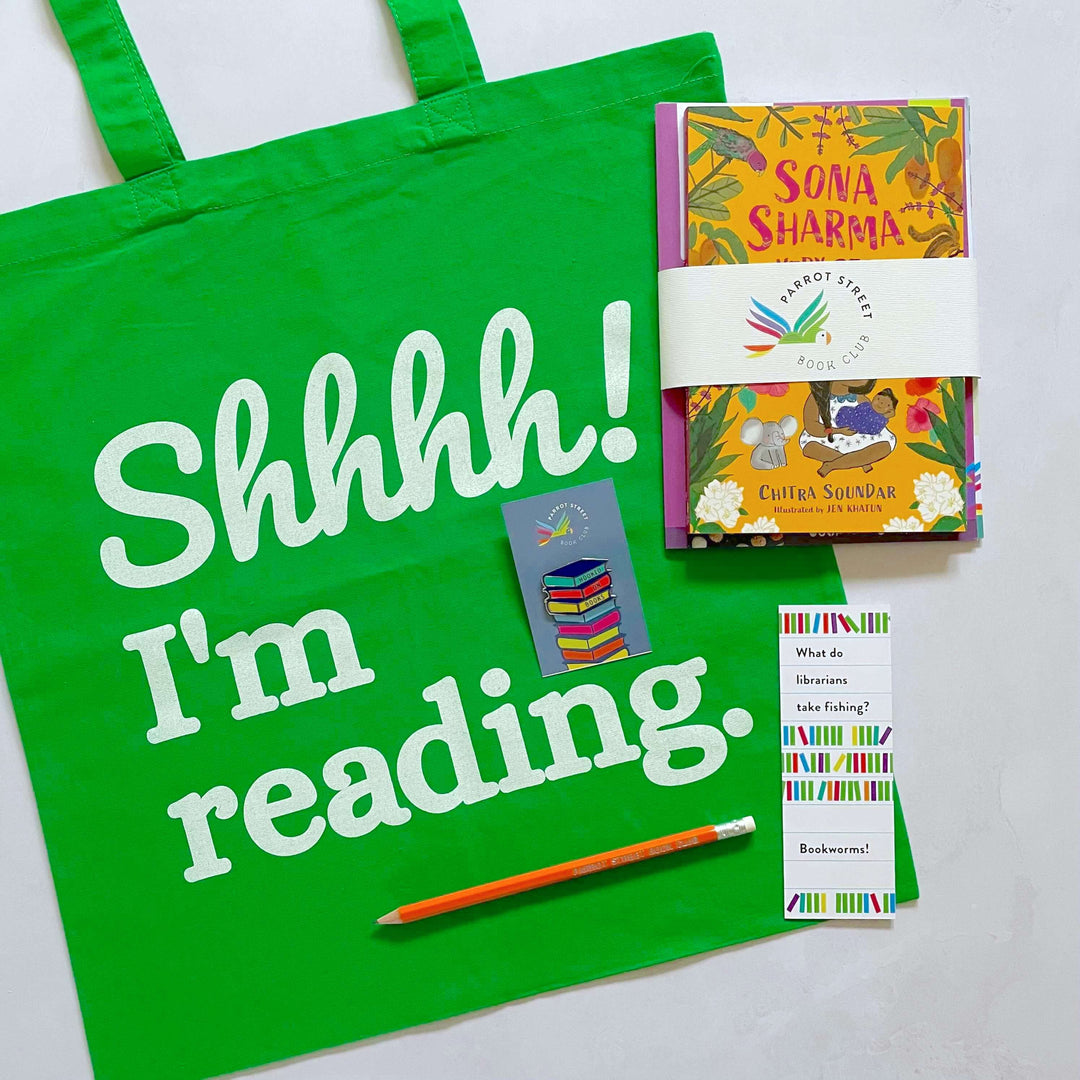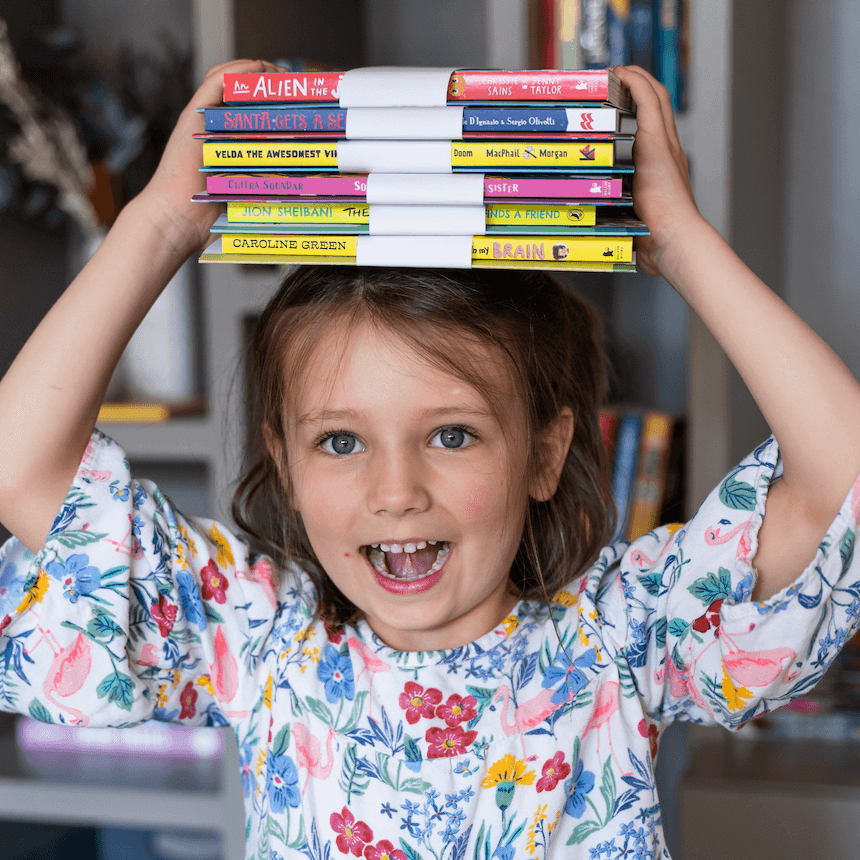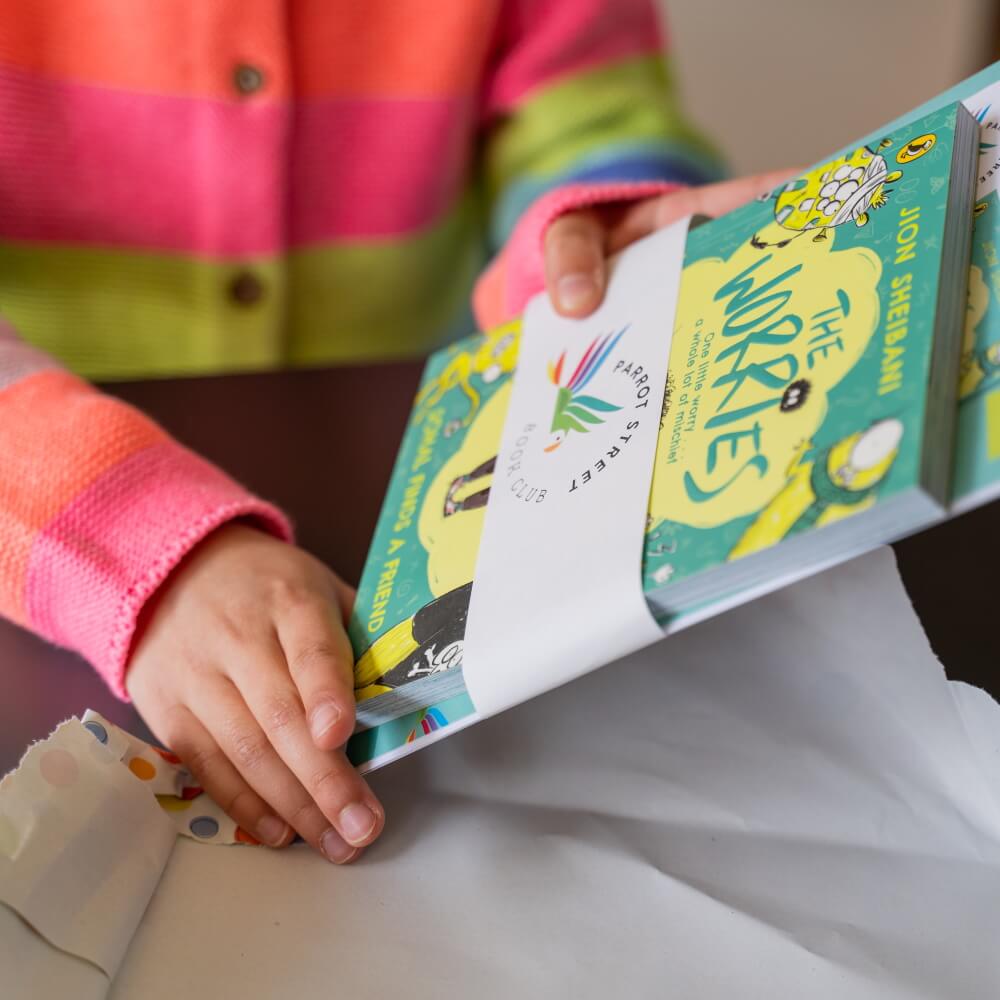An interview with Emma Rea about My Name is River and other adventure books for kids

The book we sent our Cockatoo subscribers this month is an exciting adventure story set in the Amazon rainforest that puts kids front and centre, celebrating their bravery, resilience and sense of what is just and fair. We asked author Emma Rea to tell us all about what inspired the book, the incredible cast of characters, and her travels to the Amazon.
What inspired you to write My Name is River?
I wanted to write an adventure story that would burst children’s minds open about how huge and amazing the world is and catapult them into different lives, giving them the thrill of the new. But I also wanted the story to be rooted in ordinary, real-world practicality. I’d have loved to grow up on a farm and be outside all day long getting muddy, so writing Dylan gave me the chance to imagine that childhood, and imagine his journey from his farm to a land where jaguars and sloths roam free.
Why did you decide to set the book in the Amazon and did you travel to Brazil to research it?
The funny thing about writing is that sometimes you sow seeds without knowing you’re doing it. I’ve always thought the Amazon rainforest was the most alluring place on earth, and with hindsight it seems that mentioning Brazil in my first book, Top Dog, the prequel to My Name is River, was a subconscious half-step towards writing a book set there. When I was thinking about a sequel, Brazil nosed its way into my mind, and it was an easy leap from there to set My Name is River on the banks of the Amazon and in the rainforest. I loved Eva Ibbotson’s book, Journey to the River Sea, which is set in Manaus and on the Amazon, and that fired my imagination and made me long to write my own Amazon adventure story. It wasn’t easy! I wanted the whole story to fit between a Monday morning and Friday afternoon - the length of a half-term residential geography trip - so I had to work out timings exactly, hour by hour, to be sure I could fit everything in.
I did as much research in the UK as I could but found it difficult to write fluently about what it’s like to actually be in a tropical jungle. Many authors write brilliantly about locations they haven’t visited, so it’s not essential to travel, but after two years’ writing, I was lucky enough to be able to visit the Mamiraua Conservation Reserve right up the Amazon river, and spend a week fishing and spotting wildlife every day with local people. I heard them grunt from boats in order to hear the answering grunt of all the caiman (Amazonian crocodile) that lurked just below the surface. You wouldn’t want to go swimming there! Watching them hit a tree with a stick to communicate simple things back to the village, fishing for piranha with nothing but a stick rod and berries they collected along the way, and seeing pink dolphins for myself gave me ideas and helped me write about the Amazon rainforest in my own words.
We love the idea that Dylan can see what is running through people’s veins – what inspired that?
I came across a sculpture in the Museum of Modern Art in Machynlleth which was made of glass and looked like the blue ice of a glacier. I knew immediately that if my hero Dylan saw it, he would think of Floyd – and conversely, that I could use it to explain the first time Dylan sees Floyd and thinks of ice and shards of glass, and senses that Floyd’s veins are frozen in some way, so that it’s impossible to know exactly what flows in them. And once I’d got that, I realised I could use a similar metaphor for everyone Dylan meets. It was fun trying to think of the essence of each character and I’ll probably use this just for myself to nail characters in other stories. It’s not until the end of the book that Dylan discovers what really flows in Floyd’s veins, and whether they can become true friends.
Who do you think is the real hero of the story?
Lucia behaves the most heroically because she chooses to return to a place of danger to rescue others. She’s already rescued Pernickety, her Great Dane puppy, and had the presence of mind to steal the key from the motorboat, so she could easily just leave. Also, she’s always made it clear that she’s had to be selfish in order to survive, and that she’s not a team player, so Dylan expects never to see her again. It’s only when she sees how unselfish another character has been that she’s able to act in others’ interests for the first time.
Do you have a favourite place to write?
On the sofa with my feet up. Partly because my right shoulder hurts too much to type at a desk, and partly because this position makes me feel as if I’m not working but playing. It feels like time off – a secret guilty pleasure, rather than a JOB which has to be done. I get more written if I trick myself into thinking I’m not working. I wouldn’t want a study. I have a pencil sharpener in the shape of an aeroplane to inspire me, which my son gave me before I was published, to help my writing take off. I need my feet to be warm, so I have a rug over them. It could be any sofa anywhere, and since we live in London, there’s usually some sort of noisy building work going on.
Why did you choose to write books for children?
The wonderful thing about writing for children is that there’s space for playfulness and jokes – and even for a happy ending. There’s also a responsibility that comes with writing for children. It’s important always to keep the reader in mind and to remember how impressionable they are. You don’t want to be didactic, but you do want to present characters and choices in a nutritious way, so that a child matures slightly and gleans something with every book they read. You might be introducing new words, or concepts, or characters they’re unlikely to meet, and in this privileged position, as one of the many adults who may influence them, you want to tread softly and thoughtfully. I try to write stories that help children feel resourceful and strong and enthusiastic about the future, at the same time as making them feel safe and grounded. Also, I can’t imagine anything more fun than visiting a school and being welcomed by kids who are excited to see you. Except maybe driving a tractor.
What was your favourite book as a child?
I loved What Katy Did by Susan Coolidge. It was written in 1872 – about a hundred years before I read it – and tells of reckless Katy’s accident, her inability to walk, and the transformation of her character and family relationships as she grapples with what has happened to her. I remember feeling overwhelmingly liberated and happy by her decision that she could be happy even though she had lost the use of her legs, and by the fact that this decision of hers also happened to make her lovable to her whole family. I also loved Willard Price’s adventure books about two brothers in exotic places. I read his Amazon Adventure recently and was sorry to see how dated it was. But Anthony McGowan is rewriting Willard Price’s books, so I hope they’ll find new life through him. Now my favourite children’s writers are Eva Ibbotson, Geraldine McCaughrean and Frances Hardinge.
What other adventure books for kids would you recommend to our subscribers?
First up would be The Murderer’s Ape by Jakob Wegelius. This is a long book and you only wish it was longer. It has so many twists and turns and fabulous settings and unusual characters that you lose yourself entirely in every adventure. All the relationships ring true and several are very touching. It also has the lightest touch of a good ‘message’ to children – so light that they will absorb it without even realising it. Nutritious to its very core. I also love Vashti Hardy’s fantastical adventure books, Brightstorm and Wildspark, and Lauren St John’s The White Giraffe and The Last Leopard, which celebrate wilderness and wild animals.
We have some copies of our My Name is River past pack available to purchase here. You may also like to consider one of our gift sets.
JOIN OUR EMAIL LIST
Children's book news straight to your inbox
We love sharing product updates, book recommendations, children's activity ideas and special offers via email.
